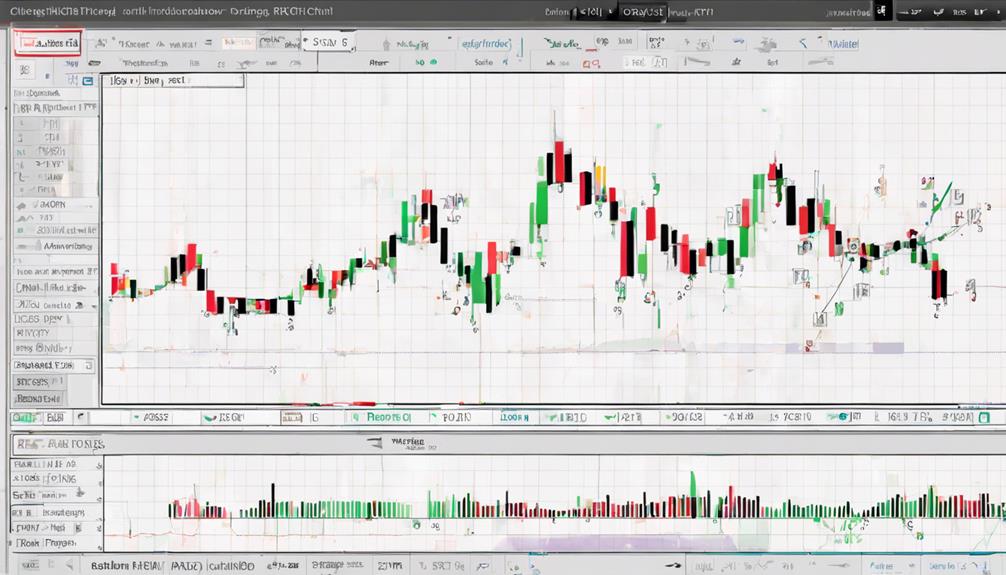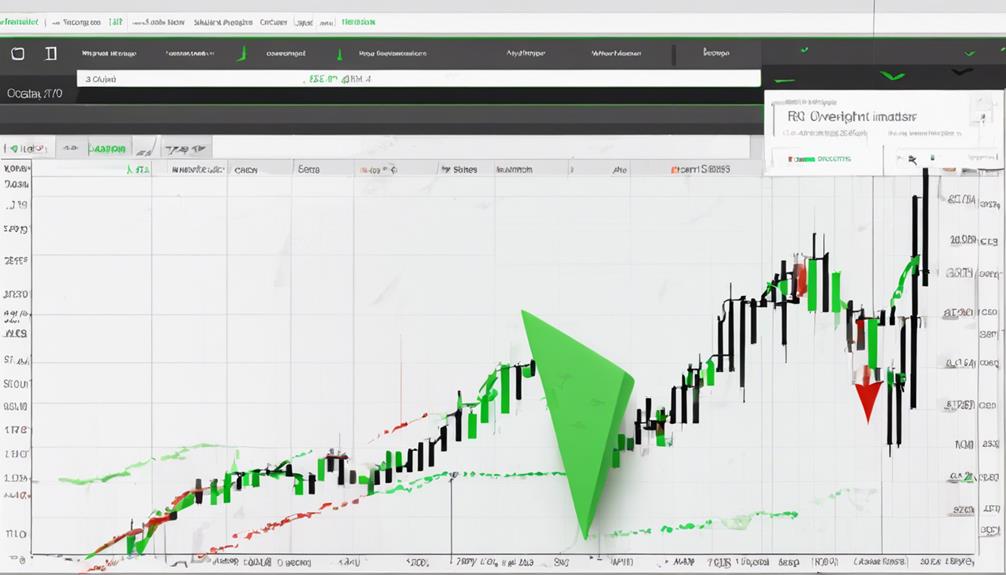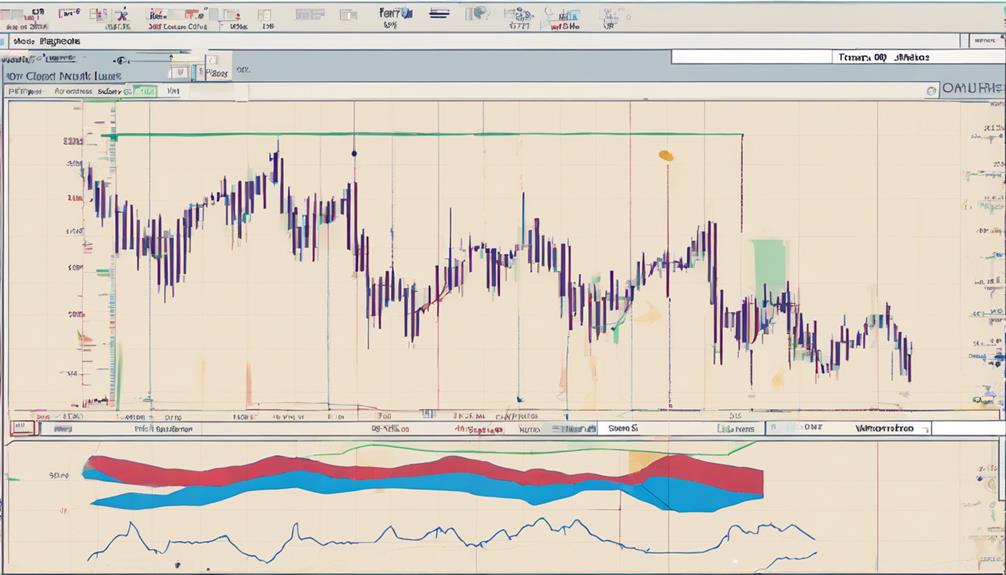Are you looking to enhance your bullish market trading strategies with the Relative Strength Index (RSI)?
Understanding how to effectively utilize RSI can significantly impact your trading success. By implementing these five essential tips, you can navigate the bullish market with more confidence and precision.
Explore the key insights on leveraging RSI for optimal trading outcomes.
RSI Calculation and Interpretation
When trading in a bullish market, understanding the calculation and interpretation of the Relative Strength Index (RSI) is essential for making informed decisions. The RSI calculation involves assessing the average gain and loss over a specific period to gauge market momentum accurately. By comparing recent gains and losses, traders calculate the Relative Strength to determine potential entry and exit points.
RSI values exceeding 70 suggest an overbought market condition, indicating a possible reversal or correction. Conversely, RSI values below 30 signal oversold levels, presenting potential buying opportunities in a bullish market.
Mastery of RSI calculation and interpretation empowers traders to navigate the market efficiently, identifying optimal moments to enter or exit positions with precision.
Setting RSI Parameters for Accuracy

To enhance the precision of your trading strategy in a bullish market, adjusting RSI parameters according to your preferred trading style is crucial for accuracy and effectiveness. When setting RSI parameters, consider the following:
- Shorten the RSI period for increased responsiveness to short-term price movements.
- Opt for longer RSI periods (20-30) for smoother trend analysis in long-term trading.
- Utilize the default RSI setting of 14 periods for a balance of noise filtering and responsiveness, ideal for swing traders.
- Choose lower RSI settings (9-11 periods) to capture more frequent trading signals, beneficial for intraday traders.
Adapting RSI parameters to your trading style can significantly impact the accuracy of your bullish market trading decisions.
Identifying Bullish Signals With RSI

Identifying bullish signals with RSI involves analyzing key RSI values to determine potential price movements in a bullish market. RSI values below 30 indicate oversold conditions, signaling a possible price increase. When RSI crosses above 30 after being in the oversold territory, it presents a bullish signal.
In a bullish market, RSI above 50 reflects strength and the potential for upward momentum. Traders often use RSI to confirm bullish trends by observing consistent readings above 50. This confirmation can offer buying opportunities aligned with the upward momentum indicated by RSI.
Keeping an eye on RSI crossing above 30 can help traders identify potential entry points for profitable trades in a bullish market.
Leveraging RSI Trendlines for Entry

Utilizing RSI trendlines in trading provides a visual guide for identifying potential price trend shifts and making strategic entry decisions based on trendline breaks. When leveraging RSI trendlines for entry, consider the following:
- Identifying Price Trends: RSI trendlines help in recognizing the direction of the price trend.
- Spotting Reversal Points: Breaks in RSI trendlines can indicate potential bullish or bearish reversals.
- Confirming Market Direction: RSI trendlines offer additional confirmation of the market's direction.
- Enhancing Trading Strategies: Incorporating RSI trendlines can strengthen trading strategies by providing insights into potential market movements.
– Are the Essential Tips for RSI in Bullish Market Trading Applicable to Momentum Trading as well?
Yes, the essential tips for RSI trading strategies in a bullish market are also applicable to momentum trading. The key is to carefully monitor the RSI levels, adjust the time frames, and use other confirmatory indicators to accurately identify high-probability trade setups.
Enhancing RSI Strategy With Complementary Indicators

Enhance your RSI trading strategy by incorporating complementary indicators like MACD for confirmation signals and improved decision-making accuracy.
Look for divergence signals between RSI and other indicators to refine your trading strategies.
Utilizing moving averages in conjunction with RSI can help validate signals and offer additional entry and exit points.
EMA crossovers serve as valuable complements to RSI readings, confirming trend directions and potential reversals.
By integrating volume analysis with RSI, you gain a more comprehensive understanding of market dynamics, leading to enhanced trading precision.
These combined indicators provide a robust framework for making informed decisions, optimizing your trades, and navigating the complexities of bullish market conditions effectively.
How Can I Use RSI for Bullish Market Trading?
When trading in a bullish market, utilizing the best RSI settings for day trading can be crucial for making informed decisions. By finding the ideal balance between overbought and oversold conditions, traders can identify potential entry and exit points to capitalize on upward price movements.
Frequently Asked Questions
What Is the RSI 30 70 Strategy?
RSI 30 70 strategy involves using 30 and 70 RSI levels to identify overbought and oversold market conditions. Crossing above 70 signals potential price reversal, while dropping below 30 suggests a possible bounce. Traders rely on these thresholds for trend reversals in bullish markets.
Which RSI Is Bullish?
When you're trading in a bullish market, an RSI above 30 signals positive price movement. Keep an eye on RSI levels below 70 for continued bullish trends. Confirm market momentum with RSI values above 30 to guide your trading strategies.
What Is the Best RSI Setting for Trading?
For trading, consider your style and timeframe. Short-term? Try 9-11 periods. Medium? Default 14 period. Long-term? Opt for 20-30 periods. Adjust RSI to match your focus. Tailor settings for stability and signals.
What Is the RSI 3 Strategy?
When using the RSI 3 strategy, you're leveraging a 3-period Relative Strength Index for swift trade signals. Capture quick market momentum shifts with this approach suitable for day traders. Its shorter calculation may offer more signals.
Conclusion
In conclusion, harnessing the power of RSI in a bullish market can be a game-changer for traders. By accurately setting parameters, identifying bullish signals, and incorporating complementary indicators, you can navigate the market with confidence.
Imagine your trading strategy as a well-oiled machine, with RSI as the engine driving you towards profitable opportunities. Remember, strategic risk management is the fuel that keeps your trading engine running smoothly and ensures long-term success in bullish markets.
